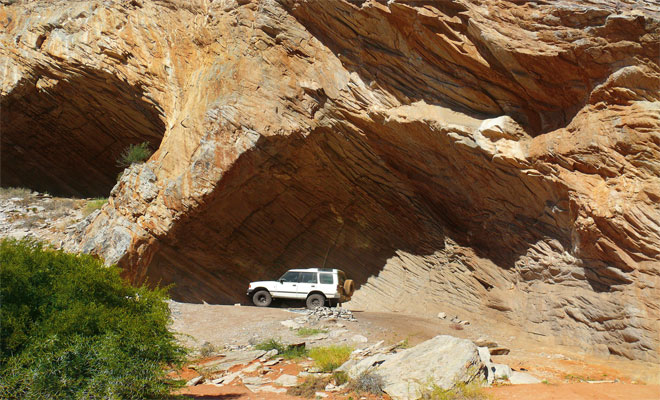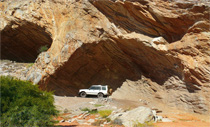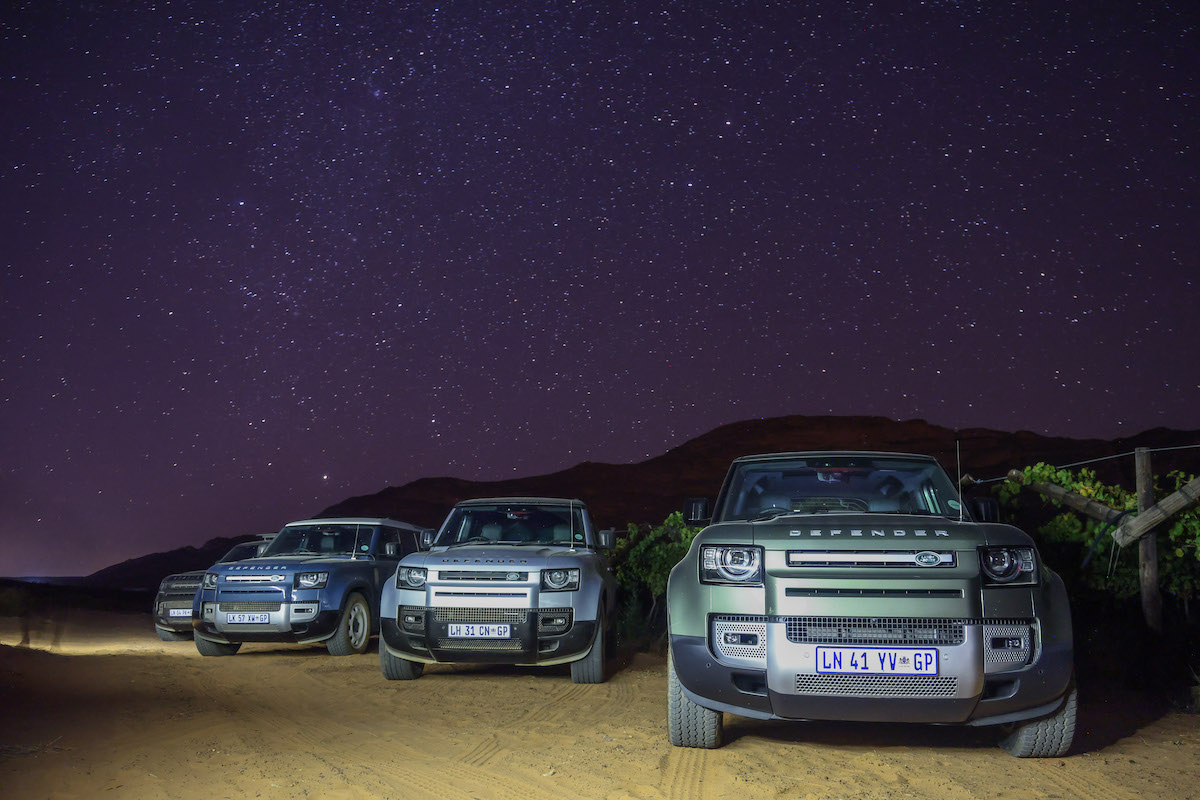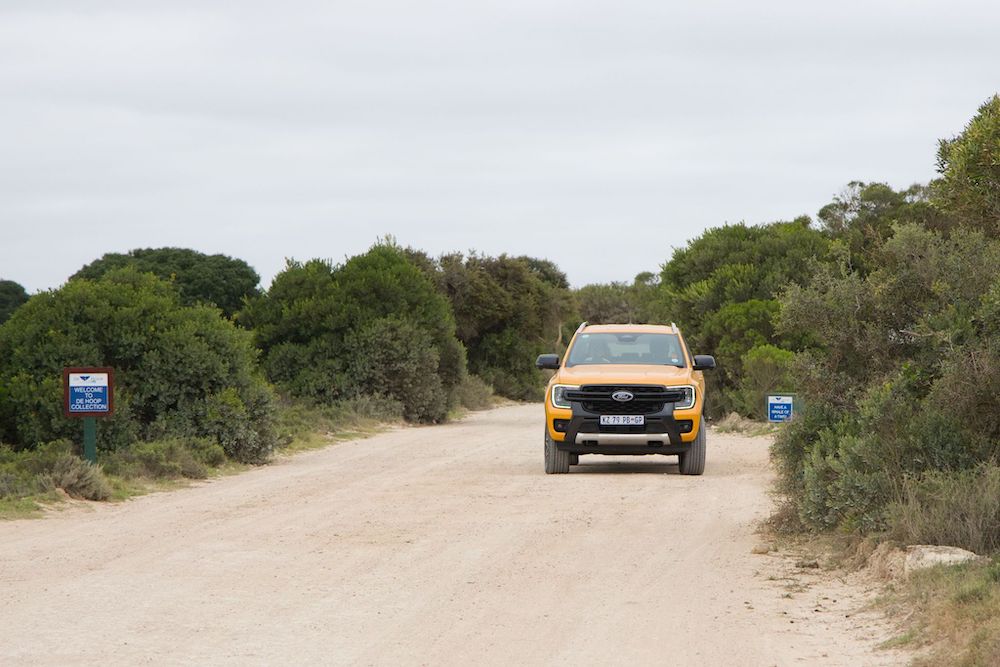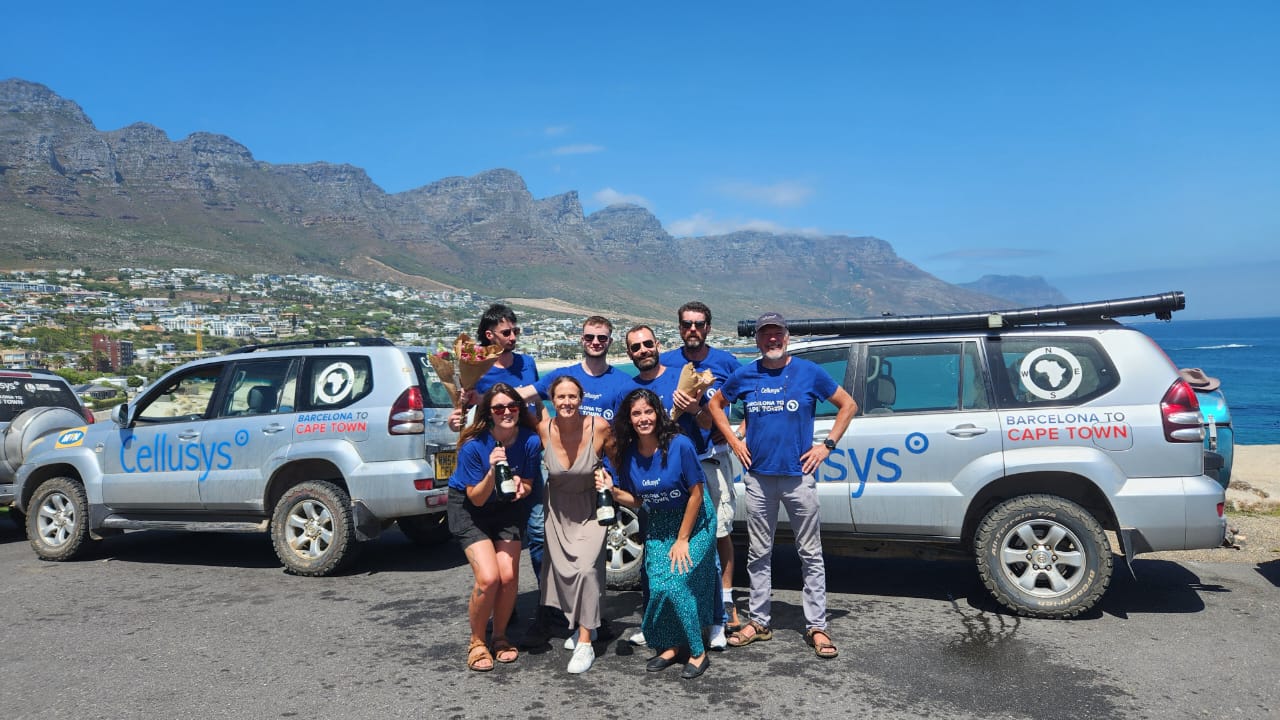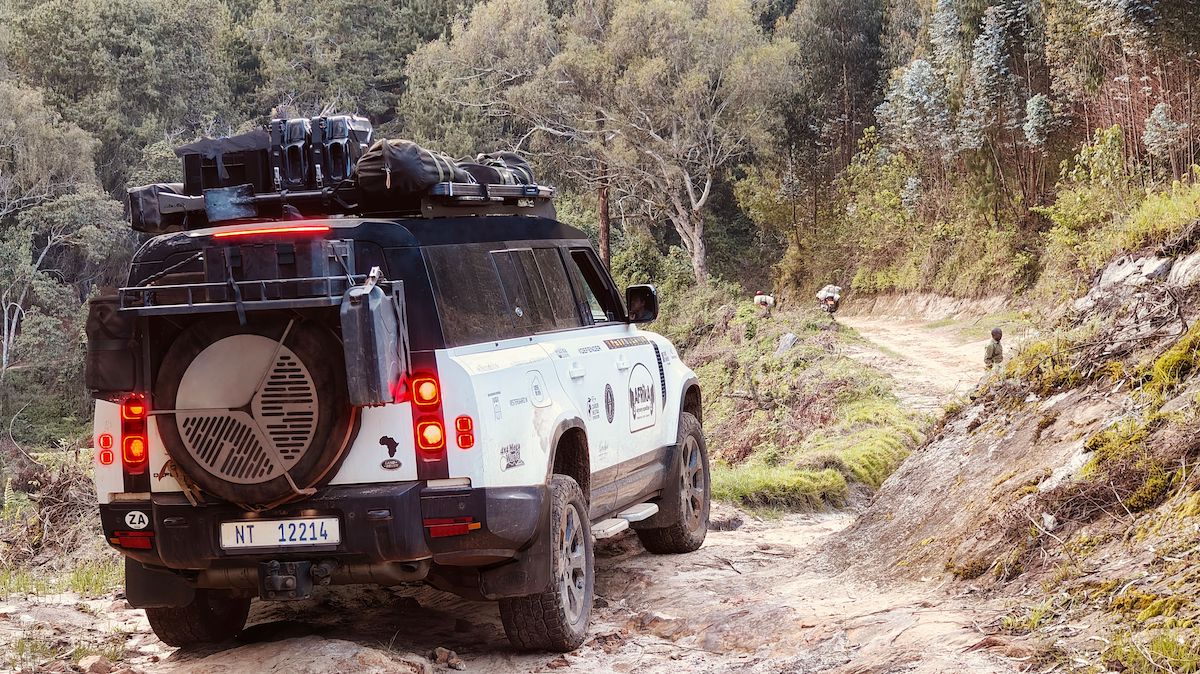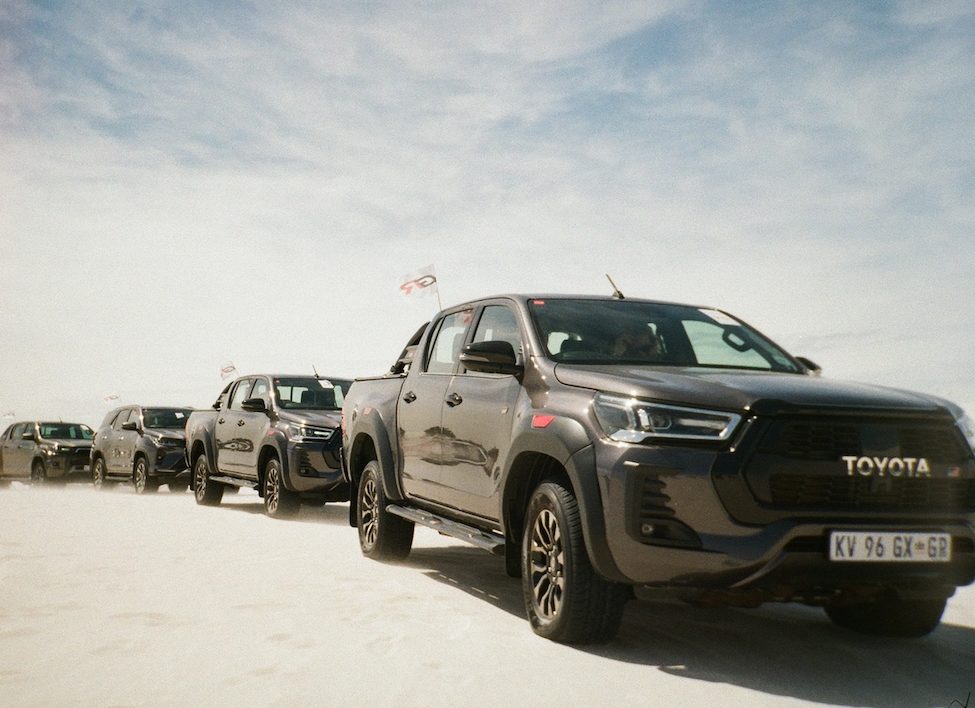During the 1800s and early 1900s, prospectors repeatedly scoured the Northern Cape for signs of gold. Recently, a 4×4 exploration group traced the route that these early fortune hunters followed in their attempts to strike it rich.
Driving a fleet of Land Rovers, the group explored abandoned mines, faced a mechanical malady and braved nasty scorpions. They also discovered that the area is indeed filled with riches, though not the kind that can be mined and sold.
In 1866, 15-year-old Erasmus Jacobs discovered a small, shiny pebble on the banks of the Orange River. Erasmus didn’t realise it at the ti me, but he had found a diamond. And his discovery would forever alter the Northern Cape’s future. Within a few years thousands of fortune seekers would f ock to the area. Most of these prospectors would come to search for diamonds, but many would also try their luck at finding other treasures, such as gold and copper.
I have oft en visited the sites where early prospectors laboured, and the area’s history has always fascinated me. Countless individuals came to the region to fi nd their fortune, but few ever did. Most prospectors struggled to eke out a living. Only one man, Jan de Vries, is said to have found gold. According to legend, De Vries moved to the Northern Cape in 1921 and found substantial amounts of gold somewhere in the area. Where? Nobody knows. Because of this interesting story, I recently decided to embark on an adventure trip that would follow the route that early prospectors had taken as they headed steadily north in their search for diamonds and gold.
Unlike the prospectors, though, my aim was not to find shiny baubles and precious metals. I simply wanted to enjoy the spectacular landscape. And to make the most of the trip, I needed some good company. Normally I travel with a maximum of three vehicles, but this ti me I decided to share the experience with a few more 4×4 enthusiasts.
After a careful selection process, I assembled an expedition team that consisted of a handful of 4×4 Off -road Adventure Club and Cape Land Rover Club members. All were Land Rover owners. We arranged to meet just north of Springbok on a Saturday. A few of us travelled to Springbok on the preceding Friday evening and met up with expedition members Kevin and Buzzy just after midnight.
When they left earlier in the day, Kevin and Buzzy promised that warm coffee and a large fire would welcome us when we arrived. This didn’t happen. They were both fast asleep when we arrived! Early the next morning we met up with the remaining expedition members and started our trip through the mountains. We headed north-west on an old track that I had traversed on a previous occasion.
I wanted to show my fellow team members an abandoned mine that I had stumbled upon years before. Rob and I explored every mine shaft we could find. The countless bats that populated the mine were spooked by our intrusion and hastily fled into other dark tunnels.
One can only sympathise with the miners who had to work in these claustrophobic mines amidst extreme heat and inadequate ventilation. It couldn’t have been fun. Our next stop was an abandoned granite mine where forgotten granite blocks dotted the landscape. A hill overlooking the mine offered a spectacular view.
In the distance we could see innumerable abandoned claim sites. From the mine we travelled in a westerly direction, using available riverbeds as our main thoroughfare.
Everywhere little-used tracks carried us in the direction that the prospectors would have taken. Unfortunately, quite a few of them led nowhere, which forced us to retrace our steps on a number of occasions. After travelling on these long-forgotten tracks for most of the day, we descended into a valley.
I immediately recognised a smooth rock outcrop at the eastern end of the valley. Water must once have flowed down the valley to create this stone giant. At the bottom of the valley, we again turned in the direction that the prospectors would have traversed with their donkeys. The sun was sinking rapidly and it was time to make camp.
We soon found the perfect spot. Although perched at a slight angle, there was a clearing against the slope that overlooked the entire valley. With low-range engaged we made our way to the area. We quickly erected our tents and were asleep by 10pm. The next day turned out to be the highlight of the expedition. Before leaving on the trip, I had entered way points into my satellite navigation system to assist us in following in the prospectors’ footsteps. Following this route, we crossed a ridge and descended slowly down heavily eroded tracks.
After a while we arrived at an abandoned (but surprisingly intact) farmhouse where the track turned north-west. In the distance we could see a wind pump standing in the middle of a shimmering pan. Cattle stood around a concrete dam in the pan, but no people or farmsteads could be found anywhere. We stopped here for a group photo and then moved on. From the pan we travelled through the beautiful Kalahari dunes along a multitude of faint tracks. Before long we were on a road leading to Eksteenfontein. At this point Niel was in desperate need of fuel, so we entered the little town.
Unfortunately, there is no petrol station in Eksteenfontein, but one of the town’s inhabitants, Denis Farmer, sells petrol in five litre containers from his home. Due to his monopoly, the price is steep; R12 per litre. Niel paid up with a smile. With Niel’s vehicle now refuelled, we left town, following the meandering path of a riverbed. No maintenance is done to wind pumps and concrete dams in the area, so we soon came across a pump spewing fresh water onto the ground. The weather was incredibly hot so we decided to have an impromptu cold shower. A short distance farther on we saw steenbok bolting from their shady hides, their midday siesta disturbed by our vehicles. Soon afterwards we stopped and set up camp for the night.
The next morning we made an early start up the valley. While climbing a steep and rutted pass, Matt hew reported a suspicious noise emanating from his vehicle. The source soon became clear – a piece of metal had punched a hole through the front differential housing. Leon and John got to work on the problem. The propshaft was taken off , the differential disabled and the half-shaft s pulled out sufficiently to disengage the spline.
Matt hew could now carry on, but only in two-wheel-drive, so he needed a bit of help on the tougher sections of the trail. Once at the top, we descended into yet another valley. To the west I was sure I could see the sea and to the north lay Bloeddrif. We passed some spectacular rock outcrops before turning into a riverbed for our last night.
Here Matt hew decided to turn for home because of his vehicle’s problems. Once we had bid him farewell, we erected our tents. As we finished eating, Buzzy produced a Woolworths chocolate mousse for dessert. It served as a reminder of a previous trip we had taken when we enjoyed a chocolate mousse dessert in the Richtersveld. The pudding was delightful and the company was very pleasant. However, we had to keep an eye out for scorpions that crept from their burrows and approached our fire. This was the first ti me that we had seen scorpions at our campsite during the trip. We donned our boots and kept an eye out for the little critters.
On our final day we visited Tierhoek, which forms part of the Richtersveld World Heritage Site. After spending some ti me exploring the area and taking photographs, I entered the next way point into my satellite navigation system. We drove to Spitskloof where we had a quick snack and then prepared to end our journey. Once at the tar road we headed our separate ways. Our ti me together in the wilderness had come to an end. The trip brought home again the unique splendour of the Northern Cape. The region is harsh and unforgiving, but it is also beautiful. Regardless of whether the area harbours diamonds and gold, it is undoubtedly one of South Africa’s most precious treasures.
